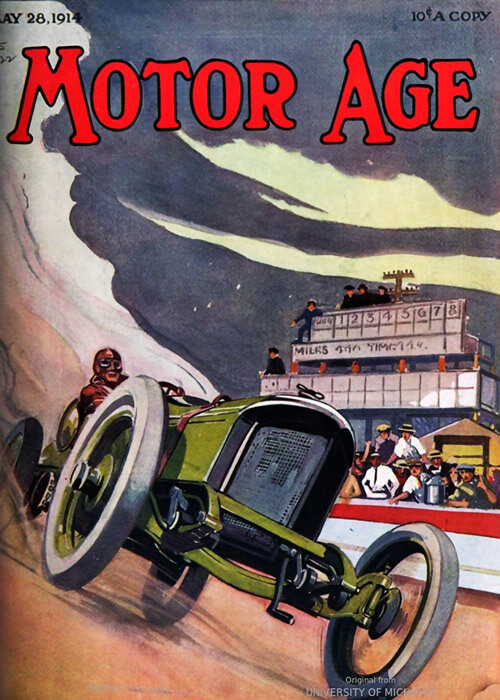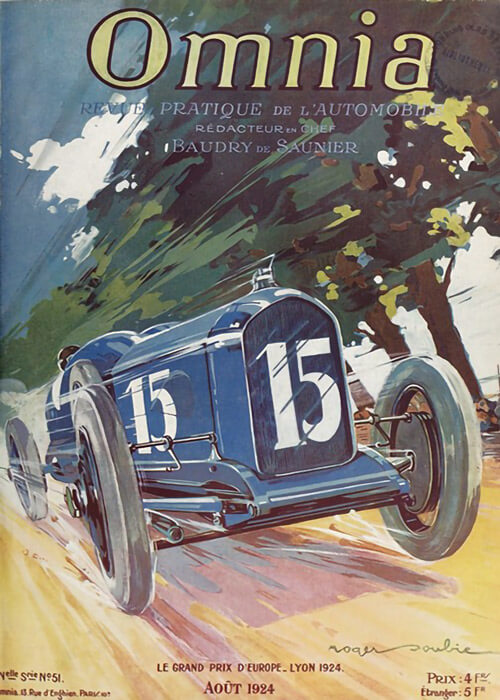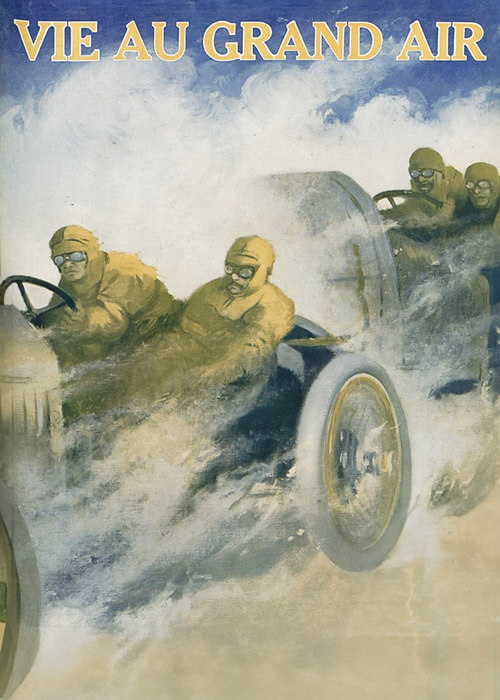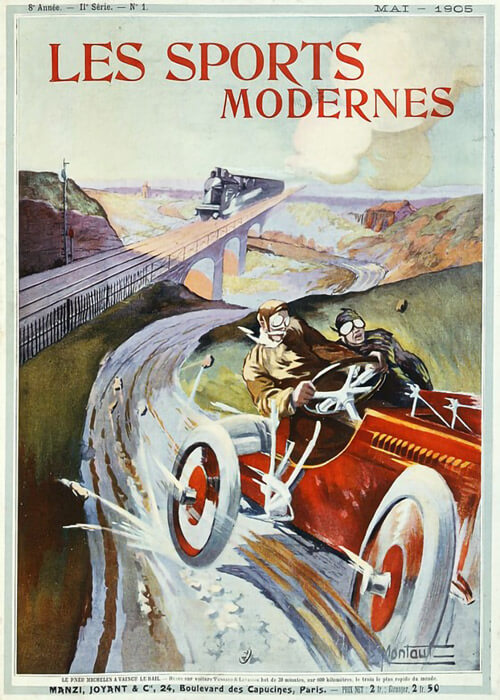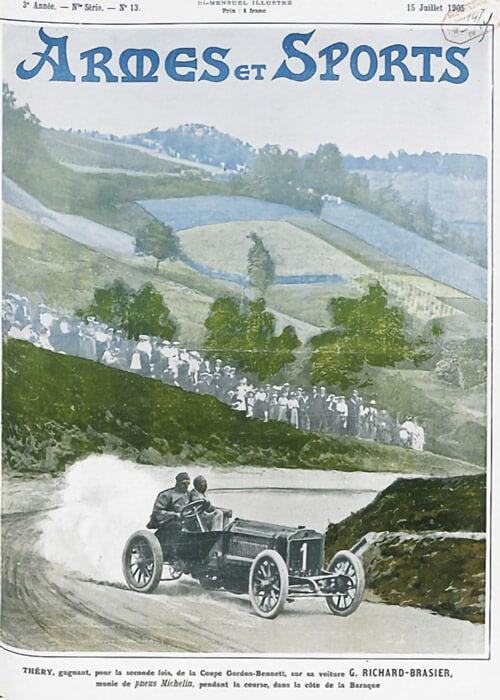This April 10 issue of Automobile Topics shows an altered and second version of the track layout, explaining the differences. Now, spectators in the main grandstand could see cars passing by three times a lap.
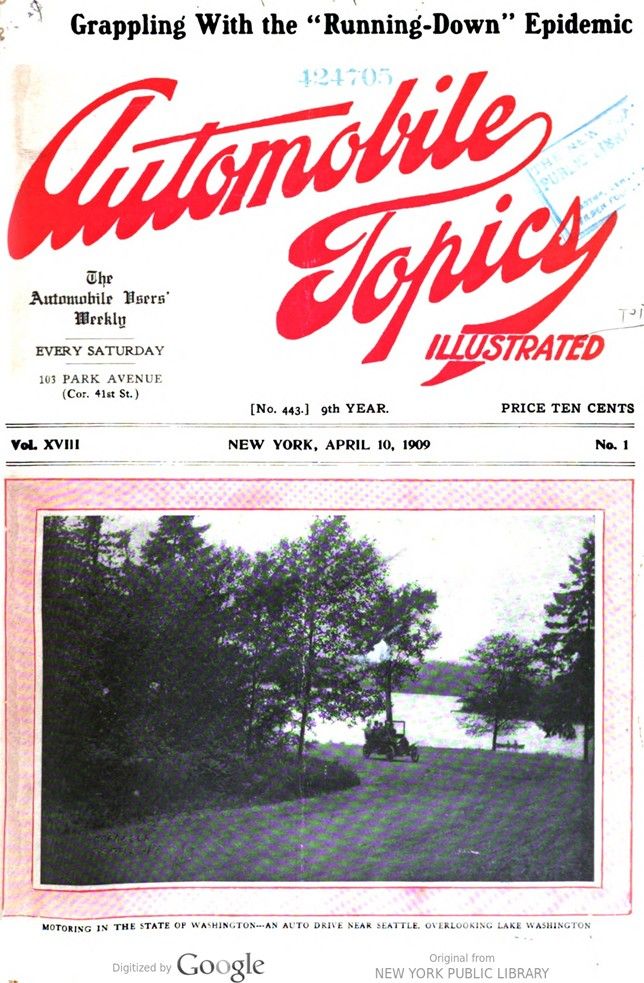
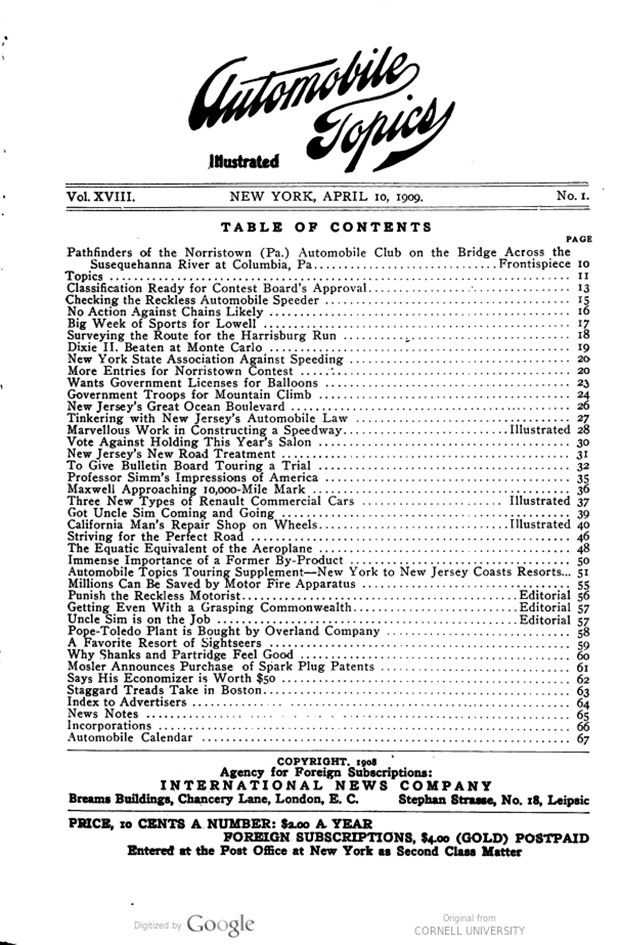
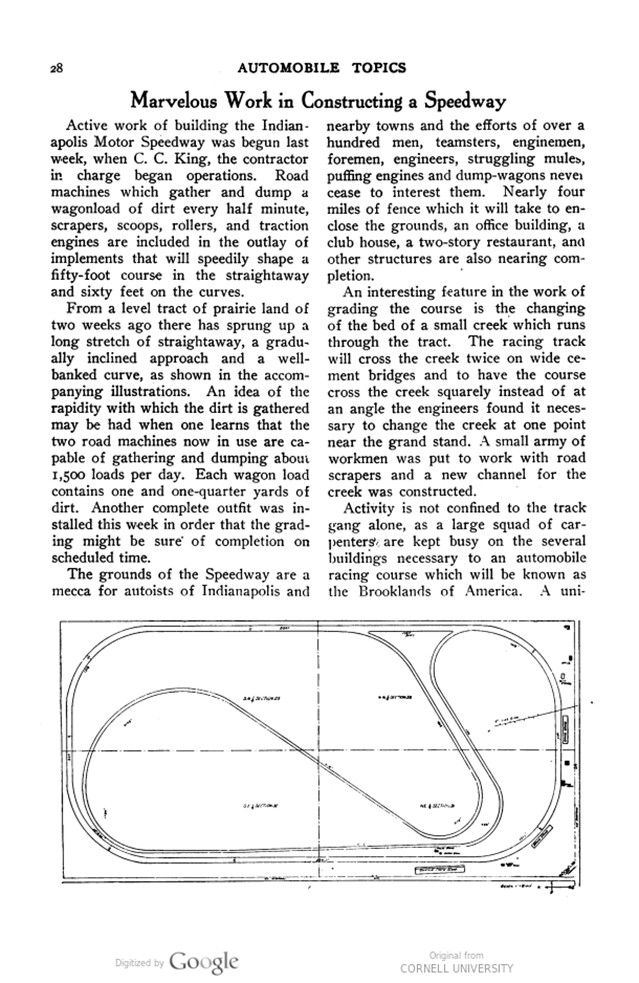
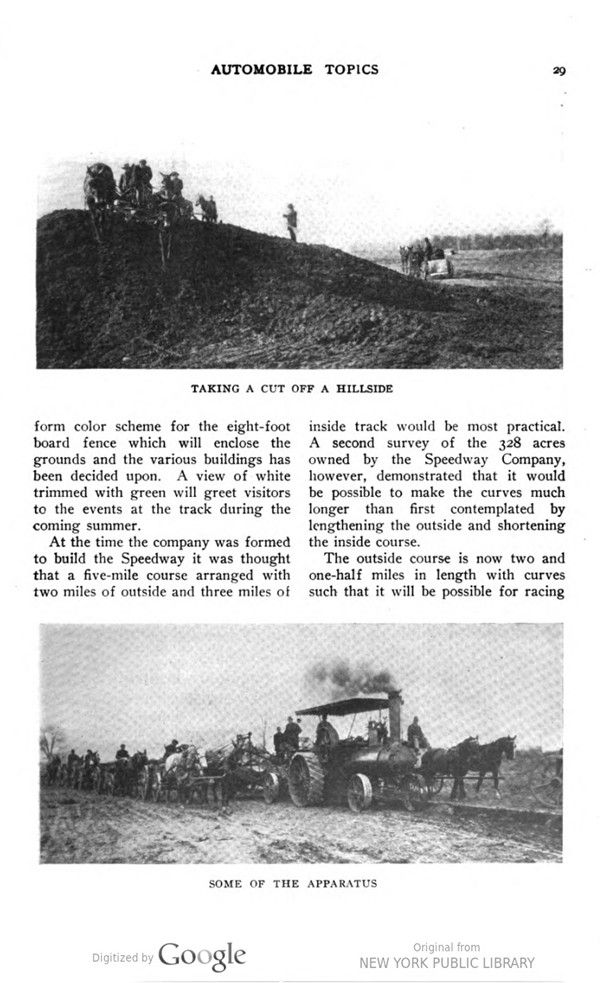

Text and jpegs by courtesy of hathitrust.org www.hathitrust.org, compiled by motorracinghistory.com
AUTOMOBILE TOPICS, Vol. XVIII, No. 1, April 10, 1909
Marvelous Work in Constructing a Speedway
Active work of building the Indianapolis Motor Speedway was begun last week, when C. C. King, the contractor in charge began operations. Road machines which gather and dump a wagonload of dirt every half minute, scrapers, scoops, rollers, and traction engines are included in the outlay of implements that will speedily shape a fifty-foot course in the straightaway and sixty feet on the curves.
From a level tract of prairie land of two weeks ago there has sprung up a long stretch of straightaway, a gradually inclined approach and a well-banked curve, as shown in the accompanying illustrations. An idea of the rapidity with which the dirt is gathered may be had when one learns that the two road machines now in use are capable of gathering and dumping about 1,500 loads per day. Each wagon load contains one and one-quarter yards of dirt. Another complete outfit was installed this week in order that the grading might be sure of completion on scheduled time.
The grounds of the Speedway are a mecca for autoists of Indianapolis and nearby towns and the efforts of over a hundred men, teamsters, enginemen, foremen, engineers, struggling mules, puffing engines and dump-wagons never cease to interest them. Nearly four miles of fence which it will take to enclose the grounds, an office building, a club house, a two-story restaurant, and other structures are also nearing completion.
An interesting feature in the work of grading the course is the changing of the bed of a small creek which runs through the tract. The racing track will cross the creek twice on wide cement bridges and to have the course cross the creek squarely instead of at an angle the engineers found it necessary to change the creek at one point. near the grand stand. A small army of workmen was put to work with road scrapers and a new channel for the creek was constructed.
Activity is not confined to the track gang alone, as a large squad of carpenters are kept busy on the several buildings necessary to an automobile racing course which will be known as the Brooklands of America. A uniform color scheme for the eight-foot board fence which will enclose the grounds and the various buildings has been decided upon. A view of white trimmed with green will greet visitors to the events at the track during the coming summer.
At the time the company was formed to build the Speedway, it was thought that a five-mile course arranged with two miles of outside and three miles of inside track would be most practical. A second survey of the 328 acres owned by the Speedway Company, however, demonstrated that it would be possible to make the curves much longer than first contemplated by lengthening the outside and shortening the inside course.
The outside course is now two and one-half miles in length with curves such that it will be possible for racing cars to travel at as high speed as 105 to 112 miles an hour around them. By making the outside course longer it was possible to eliminate the W shape of the inside course by cutting one-half mile off the original plan. In this way sharp curves were done away with. Under the present arrangement the track passes the main grand stand three times, and it is possible to see cars on any part of the five-mile track.
Within a short time pipe from the gas plant of the Indianapolis Gas Company will have been laid to the filling space at the grounds, and aeronauts entered in the national championship balloon race of the Aero Club of America, which will start at the Speedway grounds on June 5, will be able to make trial trips.
Photo captions: TAKING A CUT OFF A HILLSIDE – SOME OF THE APPARATUS



